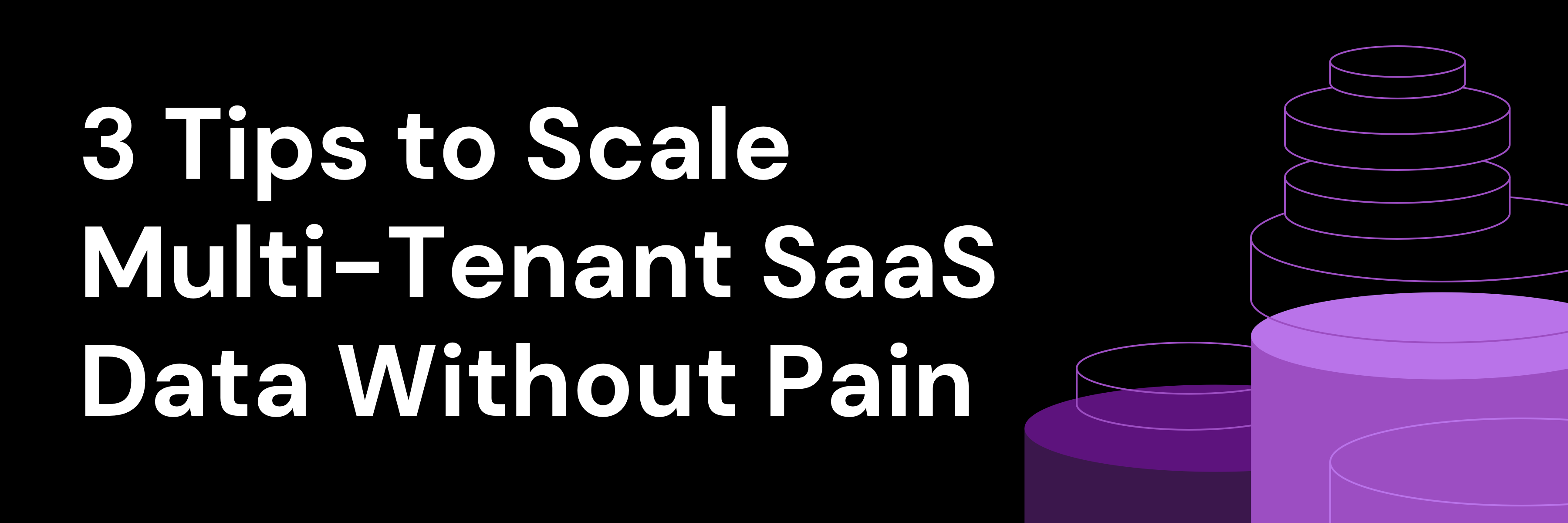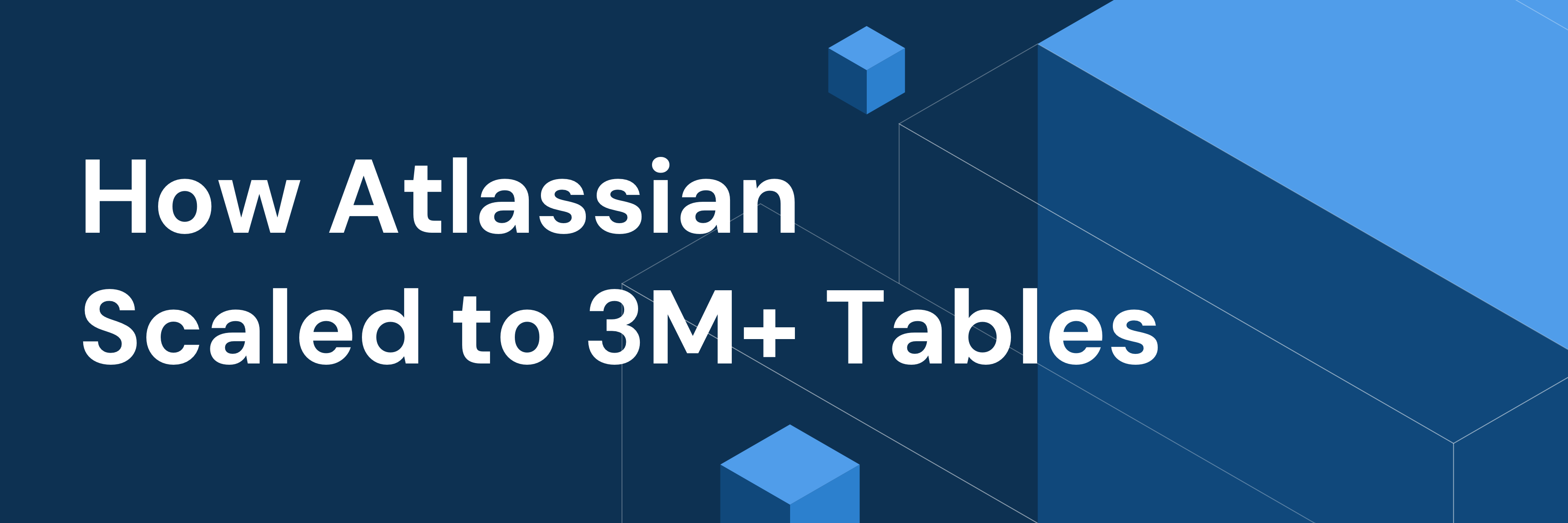
One of the most persistent challenges facing engineering leaders is how to design a scalable, secure, and cost-efficient multi-tenant SaaS architecture. While multi-tenancy enables shared infrastructure and rapid onboarding, it also introduces significant complexity, especially at scale.
In a recent webinar Kathryn Sizemore, Principal Solutions Architect at TiDB, explored the realities of building scalable multi-tenant systems for SaaS platforms. She outlined the technical traps that engineering teams fall into and the architectural strategies that offer a more sustainable path forward.
This blog dives into three key tips from her presentation to help you optimize multi-tenant data management in modern SaaS environments.
#1: Rethink the “One Database per Tenant” Strategy
One of the most common patterns adopted by SaaS teams, especially during early-stage cloud migrations, is to deploy one database per customer. Often seen as a straightforward way to isolate workloads and satisfy security teams, this strategy feels manageable when you’re dealing with a dozen or even a few dozen customers.
However, Kathryn warns that this approach doesn’t scale and can lead to disastrous outcomes.
In one real-world example, she described how a SaaS company migrating from a SQL Server to AWS Aurora adopted a per-tenant database strategy as part of a lift-and-shift migration. While it initially satisfied compliance and performance isolation needs, it eventually led to an overwhelming AWS bill that threatened the business’s viability.
The problem with this architecture is twofold. First, it leads to infrastructure sprawl as you scale, resulting in duplicated compute, inefficient storage, and ballooning operational overhead. Second, it often introduces fragile orchestration, as teams attempt to manually provision and maintain thousands of isolated databases.
Figure 1: SaaS Database Scaling Traps
In short: what appears to be a simple and secure solution quickly becomes expensive, brittle, and unmanageable.
#2: Understand the Limits of Shared Database Architectures
When teams move beyond the single-tenant-per-database approach, the next step is often to consolidate tenants within a shared database, separating them by schema or database name. While this reduces infrastructure duplication and can simplify management in the short term, it introduces a new set of challenges, especially around metadata scaling and performance.
Kathryn emphasized a hard truth: transactional databases like MySQL or Postgres simply aren’t designed to support tens of thousands of tables or databases within a single instance. The result is catalogue bloat, DDL bottlenecks, and degraded performance across the board.
Moreover, this strategy reintroduces the risk of noisy neighbors: when one tenant consumes excessive resources, it can impact the performance of others on the same system. This can result in missed SLAs and customer dissatisfaction.
Security also becomes more complex. With all tenants sharing infrastructure, maintaining strong isolation and auditability requires additional layers of enforcement, testing, and monitoring.
At a small scale, these issues may go unnoticed. But as customer count and data volume grow, the limitations of this architecture become painfully clear.
#3: Adopt Distributed SQL to Scale Multi-Tenant SaaS with Confidence
After reviewing the common approaches and their pitfalls, Kathryn introduced a third option: distributed SQL, and specifically, the TiDB architecture that supports scalable multi-tenancy by design.
TiDB separates compute and storage layers, supports horizontal scaling, and offers automatic sharding; eliminating much of the manual effort and rigidity of traditional database scaling strategies. It maintains full ACID compliance, while also handling both OLTP and OLAP workloads, making it uniquely well-suited for SaaS platforms operating at large scale.
This architectural flexibility is essential for teams that need to maintain predictable performance, strong data consistency, and operational simplicity, all while growing rapidly.
To illustrate the evolution of database systems, Kathryn used a compelling analogy:
- Transactional SQL is like driving a car: Structured, reliable, and easy to navigate, until traffic (data volume) becomes overwhelming.
- NoSQL is like an electric scooter: Fast, flexible, but chaotic and difficult to control, especially at scale.
- Distributed SQL, in contrast, is like a high-speed train: It offers the scalability and efficiency of NoSQL, with the structure and consistency of traditional SQL, built for massive concurrency and throughput.
“Distributed SQL brings together the structure and integrity of traditional databases with the scale and flexibility of modern distributed systems.”
With features like automatic failover, multi-cloud deployment, and MySQL compatibility, TiDB gives teams a future-ready foundation for multi-tenant SaaS, without the tradeoffs that plague legacy architectures.
Scaling Multi-Tenant SaaS Requires Smarter Data Architecture
As SaaS businesses grow, so do the demands on their data infrastructure. Early-stage design decisions can quickly become liabilities if not planned for scale, security, and operational efficiency.
If your team is struggling with operational complexity, unpredictable performance, or spiraling infrastructure costs, it’s time to reconsider your data architecture. Distributed SQL provides a path forward: enabling scalable, resilient, and tenant-aware systems that support long-term growth.
If your SaaS platform is running into performance bottlenecks, spiraling infrastructure costs, or complex multi-tenant workarounds, it may be time to rethink your foundation. TiDB Cloud gives you the scalability of a distributed SQL database with the ease of a fully managed service. It is designed for teams that need to move fast without compromising on consistency, security, or performance.
Try TiDB Cloud for free and see how it can simplify multi-tenant SaaS architecture at scale.
Webinar
Effective Multi-Tenancy: Scaling SaaS Over 1 Million Tables in a Single Cluster
TiDB Cloud Dedicated
A fully-managed cloud DBaaS for predictable workloads
TiDB Cloud Starter
A fully-managed cloud DBaaS for auto-scaling workloads



